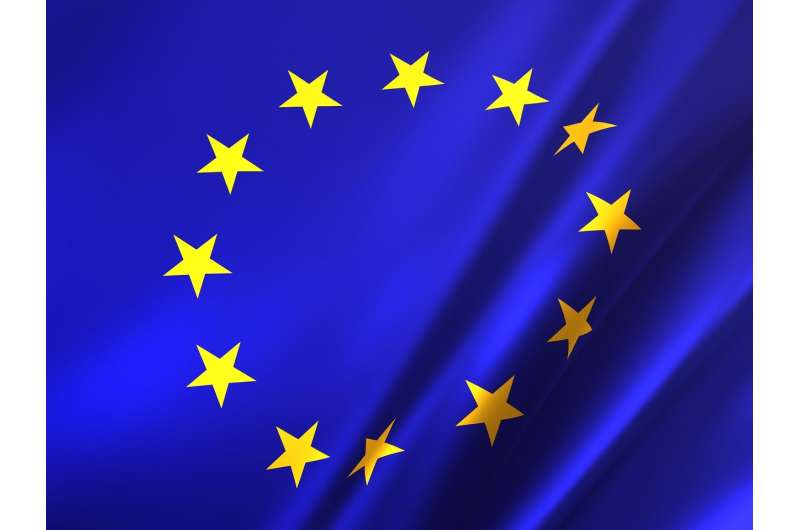
In many cases, unions in Europe have helped nonunionized workers whose jobs are precarious, according to new Cornell University research.
<section class="article-banner first-banner ads-336x280">
<!-- /4988204/Phys_Story_InText_Box -->
</section>
In “Dualism or Solidarity? Conditions for Union Success in Regulating Precarious Work,” published in December in the European Journal of Industrial Relations, the researchers surveyed academic articles to see how often they would find evidence of unions helping nonunionized workers or helping only their own members, and which conditions were associated with each outcome.
The paper was co-authored by Laura Carver, M.S. 20, and Virginia Doellgast, associate professor of international and comparative labor in the ILR School.
Unions respond to growing worker insecurity in different ways, Carver said.
In some cases, unions work with management to protect their own members while allowing management to cut pay or otherwise increase insecurity for nonunionized workers, she said. This is called dualism, because it creates a dual labor market where unionized insiders are still paid relatively well and have some job security, and nonunionized outsiders are subjected to increasing insecurity.
Unions also can act in solidarity with nonunion workers by proactively extending union protections and increasing security for precarious workers. Examples of union support include the Unite union support of the “Justice for Cleaners” protests in the United Kingdom and support by the French union CGT for the ‘sans papiers’ movement for undocumented immigrant workers in France.
A third union response is described as “failed solidarity” by Carver and Doellgast.
“Unions’ attempts at inclusivity are not always successful—in other words, attempts to stand in solidarity with nonunion workers sometimes do not actually reduce their experiences of precarity,” Carver said.
After surveying 56 case study-based articles published between 2008 and 2019, they found that:
- In 46% of cases, solidarity was practiced when unions improved working conditions for the peripheral workforce. This includes cases in which the union simultaneously improved conditions for the core workforce, as well as those in which the conditions for the core workforce remained stable or even declined.
- In 26% of cases, the unions practiced dualism by maintaining or improving working conditions for the core, unionized workforce, with either no attempt to address precarity for peripheral workers or increased precarity for these workers.
- In 12% of the cases, solidarity failed—there was no reduction in precarity in spite of union attempts to regulate or improve conditions for peripheral workers.
- In 16% of cases, there were no clear outcomes of dualism, solidarity or failed solidarity.
“The fact that successful solidarity was the most common outcome is notable,” Carver said. “This suggests there is cause for optimism, or that increased precarity is not the inevitable outcome.”
</p><hr/>
<div class="article-main__explore my-4 d-print-none">
<div class="d-flex align-items-center">
<svg>
<use href="https://phys.b-cdn.net/tmpl/v6/img/svg/sprite.svg#plus" x="0" y="0"/>
</svg>
<p class="text-bold mb-0 ml-2">Explore further
</div>
<a class="text-medium text-info mt-2 d-inline-block" href="https://techxplore.com/news/2021-02-voting-amazon-warehouse-union-vote.html">Amazon workers begin voting in landmark US union push</a>
</div>
<hr class="mb-4"/>
<div class="article-main__more p-4" readability="29.045226130653">
<strong>More information:</strong>
Laura Carver et al. Dualism or solidarity? Conditions for union success in regulating precarious work, <i>European Journal of Industrial Relations</i> (2020). <a data-doi="1" href="https://dx.doi.org/10.1177/0959680120978916" target="_blank" rel="noopener">DOI: 10.1177/0959680120978916</a>
</div>
<div class="d-inline-block text-medium my-4">
Provided by
<a href="https://phys.org/partners/cornell-university/">Cornell University</a>
<a class="icon_open" href="https://www.cornell.edu/" target="_blank" rel="nofollow noopener">
<svg>
<use href="https://phys.b-cdn.net/tmpl/v6/img/svg/sprite.svg#icon_open" x="0" y="0"/>
</svg>
</a>
</div>
<!-- print only -->
<div class="d-none d-print-block" readability="14">
<strong>Citation</strong>:
European unions' support varies for precarious workers (2021, February 25)
retrieved 25 February 2021
from https://phys.org/news/2021-02-european-unions-varies-precarious-workers.html
This document is subject to copyright. Apart from any fair dealing for the purpose of private study or research, no
part may be reproduced without the written permission. The content is provided for information purposes only.
</div>









